A while ago we talked about the importance of following a basic set of best practices when offering commissions. Now that you’re ready to start taking art commissions and you know how to keep your clients happy… The question is: "How should I price my art?"
Don't worry, I've got you covered!

Pricing your commissions is an art in and of itself. If you price your art too high, you may scare too many clients away and you won't be able to earn a stable income from selling your art. On the other hand, if you price it too low, you will be working crazy hours for peanuts.
The key is finding the right balance between what you think your art is worth and what your clients are willing to pay for it. More often than not, the demand will also play an important role in how you price your art.
Today, you're going to learn how to price your art and offer your services to turn your art into a thriving business.
But, first you need to do something else...
LET GO OF THE STARVING ARTIST MENTALITY
I bet my hat that at some point or another, someone has tried to dissuade you from becoming an artist.
"Art is not a real job"
But, let me tell you something: it is! And it's high time we stopped letting others decide what our careers should look like.
In this day and age, if you want to be an artist, you can. There's nothing stopping you. There is a need in the market for artists of all kinds and all we have to do is let go of the fear of becoming "a starving artist".
You can be a starving artist or you can be a thriving one. The difference between those two scenarios is how you market yourself and your art to attract clients.
Marketing your art commissions to get clients
Art is a real job. And, just like in any other real job, you need to work hard to:
That's why so many artists never make it. If you believe that you don't need to actively market your commissions… That, somehow, clients will find you and hire you. You'll have a hard time turning your art into your full-time career.
Some artists are so popular that they don't need to do these things because they'll always have a queue of people wanting to commission them. But, unless you're one of them, you'll have to put systems in place to find clients, sell your art efficiently and get your business running.
It's not as daunting as it seems but it will guarantee a constant stream of clients and stable income.
If you're interested in learning more about marketing your commissions, let me know in the comments below and I'll write more posts about it!
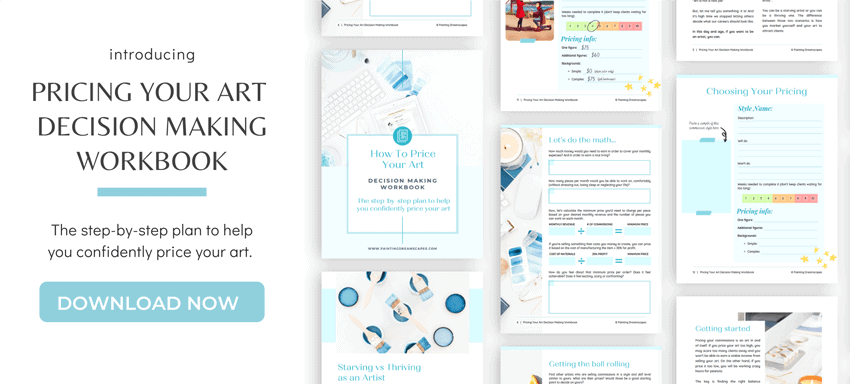
10 Things you need to know before you price your art
You've learned how to take commissions in a responsible way. That you'll need to market your services to attract clients. And the right steps to take to keep them happy with your work!
Now, it's time to get your commissions out there! But, how should you price your art commissions?
If you've never offered art commissions in the past, you're probably not sure how much your art is worth. That's fine! Get your learning on, my friend! You're going to learn how to price your art commissions the right way!
1. WHAT'S THE QUALITY LEVEL IN YOUR ART?
It goes without saying that high quality art with good anatomy, nice composition, lighting, and detailed backgrounds will be more expensive than unpolished artworks with flaws and other issues.
Sometimes we're our own worst critics, telling ourselves our art is worth nothing. Other times, we look at our art through rose-colored glasses and we refuse to acknowledge that... it simply isn't that good (*audible gasp*).
These flawed perceptions can lead us to price our art wrong. If you're a beginner artist or it's the first time you're offering commissions: ask your audience or other professional artists what they think a fair price for your art is.
I first started offering commissions barely 5 months after I had started taking art seriously. With only a few months’ worth of experience in digital art.
I was so not ready for it.

I wanted to charge up to $60 for the piece on the top . Eventually, I realized it wasn't worth that much and reduced its price to a measly $5 per character (too low in my current opinion).
Now, 10 years and lots of practice and hard work on my back later, I can confidently charge up to $400 for pieces like the one at the bottom.
Acknowledge what the quality of the art you can offer right now is worth. The more you keep working and improving, the more you'll be able to charge for your work!
A few notes:
Try to get the advice from an experienced artist after you've asked your audience, to make sure you chose the right prices.
2. HOW LONG DOES IT TAKE YOU TO FINISH AN ART COMMISSION?
The longer it takes you to complete a piece, because of its complexity, the more expensive it will be. It won't take you as long to draw a portrait of a man than a painting of a whole family and their dogs. This is especially important when you offer your commissions in "add-on" mode.
For example...
✦ Portraits start at $40. Extra characters $25. Detailed backgrounds $50.
This is a really easy way for your customers to calculate how much they'd be spending depending on what they want to include in the piece.
However, it'd be wise to add a disclaimer that prices may vary depending on complexity. Because you may end up having to draw a very intricate armor that is going to take you longer than the whole family and their dogs we mentioned before. And that's not fair to you.
3. CALCULATE YOUR EXPENSES TO DETERMINE YOUR MINIMUM REVENUE GOALS & PRICE YOUR ART CORRECTLY
If you're only offering commissions as a way to make some money on the side of a day job or while you're at school, this may not be very relevant for you yet.
But, if you want to become a fulltime artist and turn art into your career, you need to listen up! 😉
One way to price your art commissions is based on your own expenses. You'll need to hit a certain revenue goal in order to be able to cover your expenses and pay your bills. So, calculate how much you spend on an average month and add a bit more as a safety net for unexpected expenses or savings.
That's the minimum revenue goal you need to hit in order to make ends meet another month.
Let's imagine you need to pay $600 in total every month. Now, let’s say your commissions sell for an average of $60.
$600 / $60 per piece = 10 commissions
That means you’d need to work on a minimum of 10 commissions per month to cover your expenses. You’d need to sell more if you wanted to earn more revenue.
Now, if you’re very productive you can calculate the minimum price you’d need to charge to meet your revenue goals instead.
For example…
If you can complete a drawing every day of the week (not including weekends), to earn $600 you’d need to charge at least $30 per piece.
$600/20 commissions per month = $30 per commission (minimum)
If you know how much you need to earn, you’ll be able to calculate how much you need to charge for each piece and how many commissions you’ll need to do per month to achieve your income goals!
Keep in mind that some commissions may sell for $30 but others could sell for $200 based on complexity. These are just some basic calculations using average quantities.
✦ Related: 3 Smart questions to quickly get your art pricing right

4. KNOW YOUR MARKET AND TARGET AUDIENCE
You need to know your audience in order to be able to market your commissions to them successfully.
If your audience has limited funds or no jobs, your prices will be limited by what they can pay for. Whereas if your target audience is wealthier, you won’t need to lower your prices to be able to sell your art to your clients.
Knowing your audience is the key to pricing your art in a way that allows you to sell your art online and make enough money while being affordable for your client base.
Does that mean you have to sell yourself short in order to get clients? No, definitely not.
Surely, not all of your audience will be unable to afford your art. If you search and you market your art efficiently, you’ll still be able to attract high paying clients.
But, if you prefer, you can always offer your services to a different target audience that suits your income goals better! Don’t settle if you don’t want to.
For example…
When I offer my commissions on deviantART, I rarely get high priced commissions because my audience can’t afford to pay as much.
However, when I offer my commissions through ArtCorgi, I get clients that are willing to pay $100-$400 per piece.
DeviantART and ArtCorgi have significantly different target audiences. My income potential is higher when I work through ArtCorgi than when I do it through other platforms.
Find what works best for you!
want to make a stable income from your art?
Enroll in my brand new mini course and learn the key to making a stable income from your art without overworking yourself or sacrificing all of your spare time.
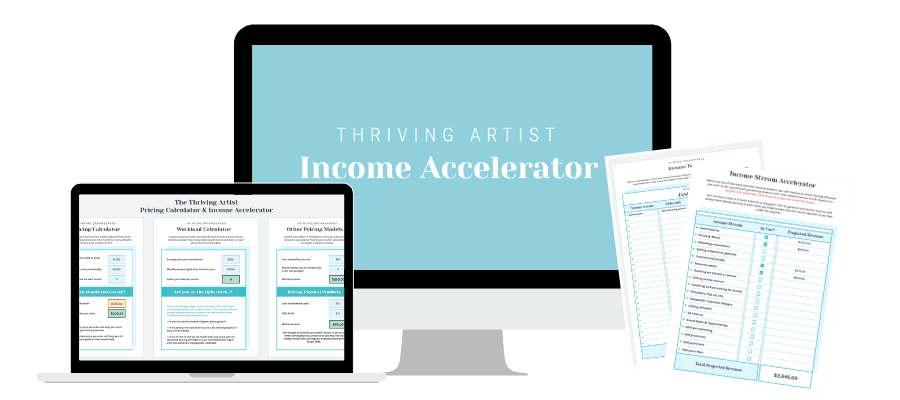
5. WHAT’S THE AVERAGE PRICE OF ART COMMISSIONS DONE BY SIMILAR ARTISTS?
This goes hand in hand with knowing your audience. If you take the time to analyze other artists in your market, you’ll know how to price your art commissions better.
Find other artists who are doing commissions in a similar style and skill level than yours and check their prices!
Are they all pricing their art similarly or does the price point vary greatly from artist to artist?
You can use this information as a starting point for pricing your commissions. You’ll know what the average price for art commissions like yours sells for. But, don’t limit yourself if you think your art is worth more!
6. OFFER DIFFERENT TYPES OF ART COMMISSIONS AT DIFFERENT PRICING TIERS
Offering diverse commission types at different price ranges can help you get more clients. Different pricing tiers will make it easier for your potential clients to commission you regardless of their budget.
Most artists offer commission style tiers like:
The simpler tiers will be less expensive than the more complex ones. Your clients will have a wider range of prices to choose from that adapt to their personal budgets.
7. OFFER DISCOUNTS TO GET YOUR FIRST CLIENTS & GATHER TESTIMONIALS
If you’ve ever offered art commissions, but no one bought them… You’re not alone.
We all start somewhere! The hardest part is finding that first client. And the reason why is not your lack of skill or your pricing or anything.
It’s as simple as this: no one wants to be the first to do it.
If you haven’t worked with clients in the past, that could be a signal to potential clients that you are unexperienced (duh) and that it may be a risk to invest in your art now.
There’s a reason why word of mouth is so crucial these days to sell products and services. We trust other people’s experiences and we’re more inclined to give something a try if someone has recommended it.
But, you don’t yet have any recommendations. And you won’t get any praise until someone commissions you. Ahhh!
Fortunately for you, this has an easy fix! Offer your first commissions with a nice discount on them to help your potential clients feel more comfortable commissioning you for the first time.
Once you’ve done their commissions, make sure to ask them to write a small testimonial of how their experience working with you was.
You can use this the next time you offer commissions to show to other potential clients that you can be trusted!

8. INCREASE YOUR PRICES WHEN YOU IMPROVE OR YOU HAVE A LONG WAITLIST
I told you earlier in the post. Pricing your art commissions is an art in and of itself.
It’s not a one-time thing. You need to tweak your prices often to adapt them to your current circumstances.
If your art has improved, you should charge more for it. If you’ve become faster at completing and delivering high quality commissions, increase your prices. Have you started receiving a lot of commission requests and you’re not able to accept them all? You guessed it: rise your prices!
You’ll be able to earn more by working the same or less than before.
The same can be said for lowering your prices. If at some point you notice you’re not attracting enough clients despite your best efforts, try lowering your prices a bit.
✦ If that attracts more clients your way, keep them for a while before rising them up again. Or find a new target audience to market to.
✦ If that still doesn’t do the trick, other factors may be at play and you’ll need to do some research to figure it out!
9. ACCOUNT FOR YOUR SUPPLIES, TAXES, FEES, ETC.
It's important to take into consideration how much you're spending on your supplies (especially if you're using traditional media). Also, keep in mind any fees associated with your payment processor, your state's taxes on your sales, etc.
These will play an important role into your earnings at the end of the month. So, make sure to account for them and include them in your prices.
PayPal doesn't allow you to ask the buyer to pay the fee, that's yours to pay. But if you want to earn 50 clean from a certain commission style, you should list your price as $52 or enough to cover the fee.
Always, BEFORE the client pays. You can't ask them to pay more on top of your listing price (unless it's TAX or you need to ship something).
IMPORTANT:
Asking your clients to pay your commission as sending money to "Family and friends" within PayPal is not permitted.
If PayPal catches you, they'll freeze your account and you'll be at risk of losing all your funds.
If you're selling commissions, you need a business account (or a Premier one if you have an old PayPal account). Plus, your clients won't be able to defend themselves if you scam them. BTW, don't do that.
10. DON’T SELL YOURSELF SHORT!
I can say it louder but not clearer. We often think some artists are overpricing their art or that they’re not good enough for that price. But there’s something worse than overpricing your art and it needs to stop.
Don’t undervalue yourself.
If your art is good, charge a price that is fair to you and the work you’re putting into it.
“But that will scare clients away”
Maybe. But those aren’t your ideal clients. You want to surround yourself with people who value your art and are willing to pay what it’s worth.
If you sell yourself short, you’ll attract clients that will try to lowball you into selling commissions for dirt cheap prices. And, if you’re unlucky enough, they’ll feel entitled to cheap, high quality artwork with fast turnaround times. They will give you a hard time and negative reviews when you try to increase your prices.
Not only that, but I know for a fact, some people will refuse to commission you if you’re selling yourself short. If you don’t believe in yourself and your art, they won’t either.
Not worth the hassle. Increase your prices as you improve your skills and you’re able to provide higher quality art! Surround yourself with people who value you and your work!
Let’s recap: what you need to know about pricing your art commissions!
- 1High quality art with good anatomy, composition and detailing will be more expensive than low quality art with many flaws. Ask your audience and other experienced artists what they think your art is worth.
- 2The more complex the piece, the higher the price. If you sell your art as “add-ons” for different elements, add a disclaimer that prices may vary with complexity. That way, you won’t be working overtime on a very intricate design for less money than it’s worth.
- 3If you want to turn art into your career, use your monthly expenses and income goals to calculate the minimum price point for your commissions. You can also calculate how many art commissions you’ll need to work on to meet your goals.
- 4Know your target audience to offer prices that they can afford. If you don’t want to lower your prices to suit that audience, find a new audience who is well-off financially. Then, sell your art to them.
- 5Research other artists doing similar commissions to yours and check what their pricing is like. Use it as a starting point to decide on your own prices!
- 6Offer different pricing tiers or commission styles in a wide range of prices to be accessible to people regardless of their budgets.
- 7Get your first clients by offering discounted commissions or other bonuses. Once you’ve finished their commissions, ask them to write you a testimonial or praise. Use that to build trust with other clients. That way, you won’t need to offer your services for such cheap prices.
- 8Increase your prices once your art has improved, you’ve become faster at creating high quality art or you have a lot of people asking for commissions. Lower it if you find yourself out of clients. Adjust your prices to your circumstances.
- 9Account for your expenses on supplies, fees and taxes!
- 10Do not sell yourself short. Don’t undervalue yourself. Surround yourself with people who are willing to pay what your art is worth!
Did you find this post helpful? Have any questions?
Let me know in the comments below!
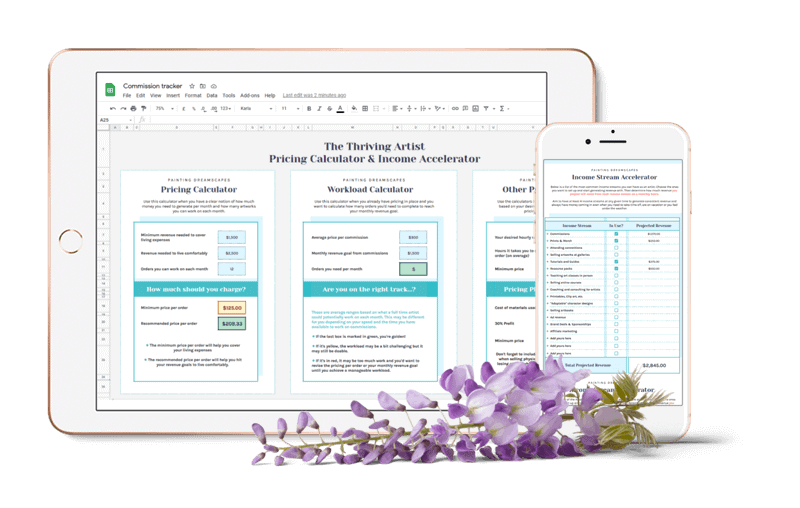





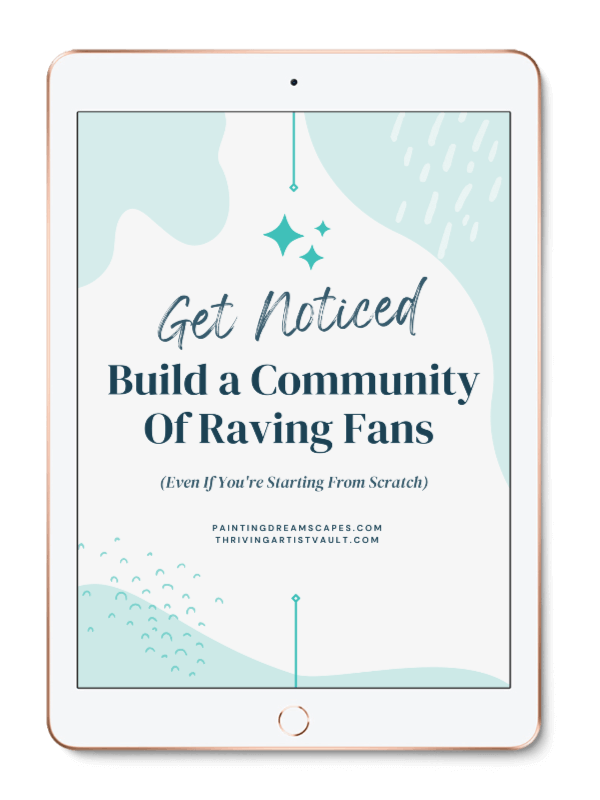
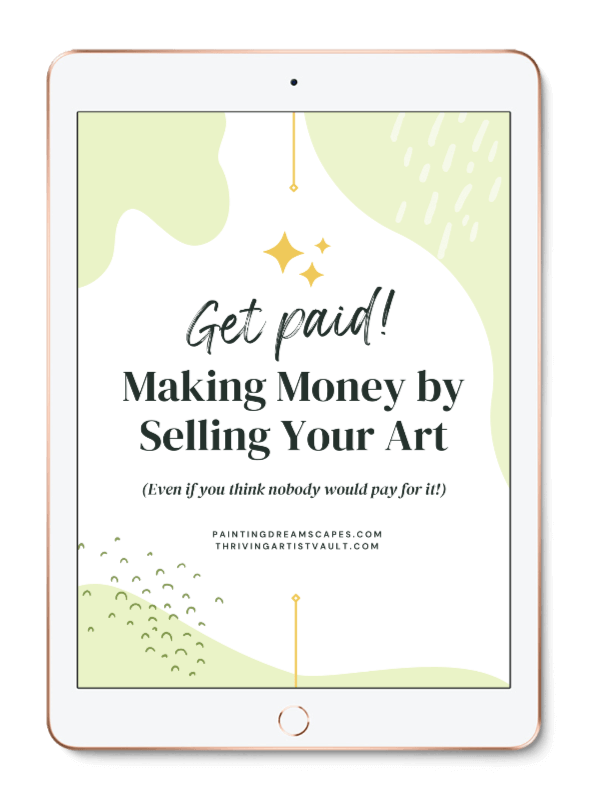

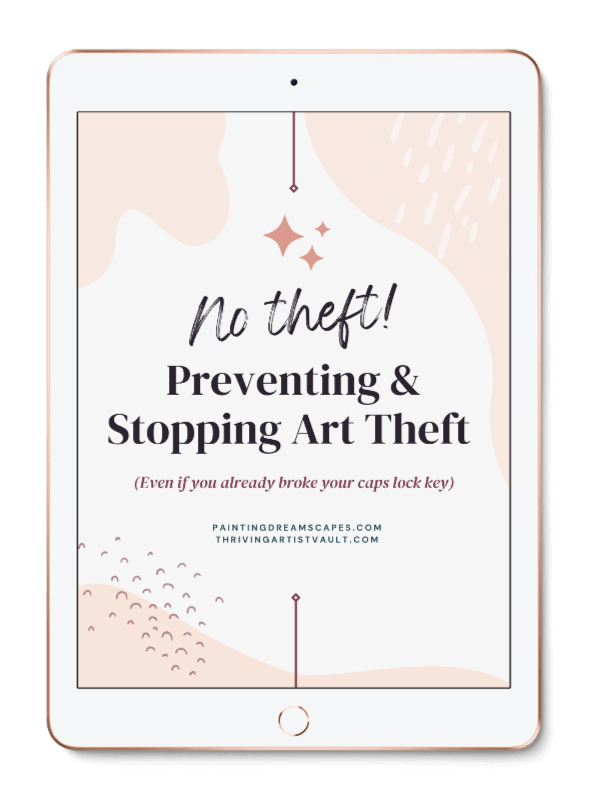
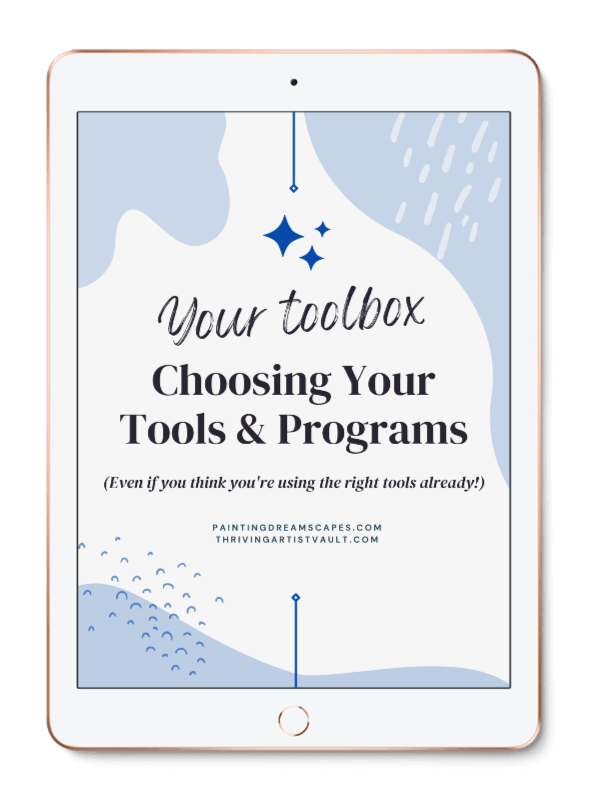
Thank You so much this really helped alot . I have been painting on and off for 16 years. I appreciate all the
advice and plan on using.
Thank You,
Yevette Newlin
Thank you so much, Yevette! I’m glad to hear you found it useful and congrats on your long path as an artist! 🙂
Do I need a Paypal business account if I do a commission as a one-off thing? I have no intention of doing commissions as a business (that is to say, regularly, as a source of income), but I know someone who’d like me to draw something specific for him, and he’s willing to pay me for it in compensation for my time.
For just one project, I don’t want to go through the trouble of opening a business account and a bank account or whatever this would require.
Hey! For a one-off commission I don’t think you’ll need a business PayPal account but keep in mind that PayPal will still require you to identify yourself and it may ask you to connect a debit card and/or bank account if you want to transfer the funds to your bank or you plan to pay for things online (to have a back up source to pull funds from if you buy something more expensive than what you have in your PayPal funds.
It may be easier if he maybe gifts you an Amazon giftcard (or any other kind of giftcard that you can spend the credit on whichever website of your choice) for the value of the commission. That way you wouldn’t need PayPal and you’d still get to buy things you love with it.